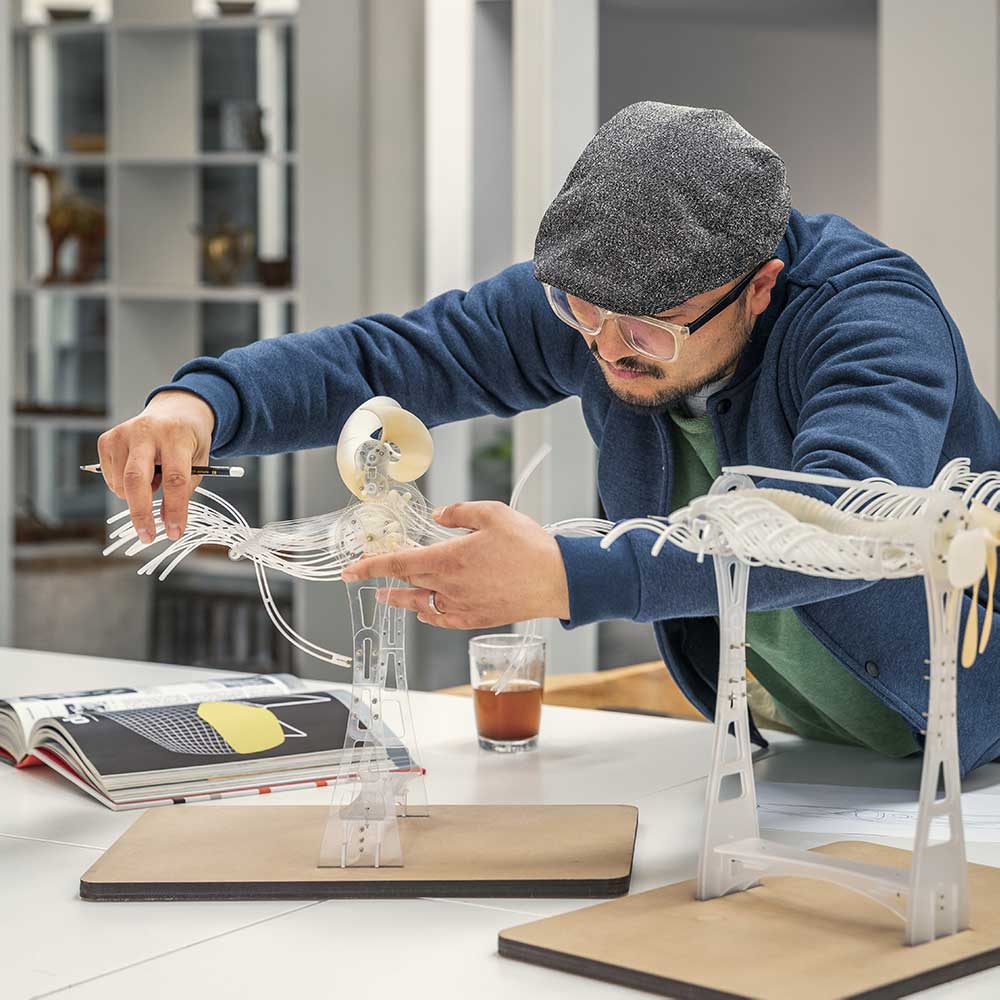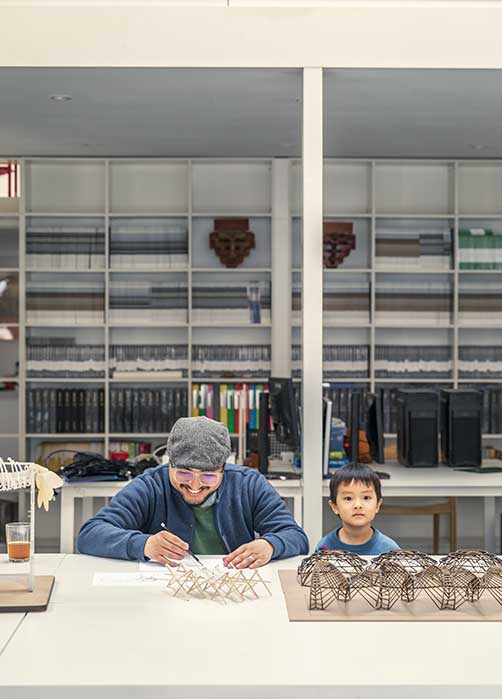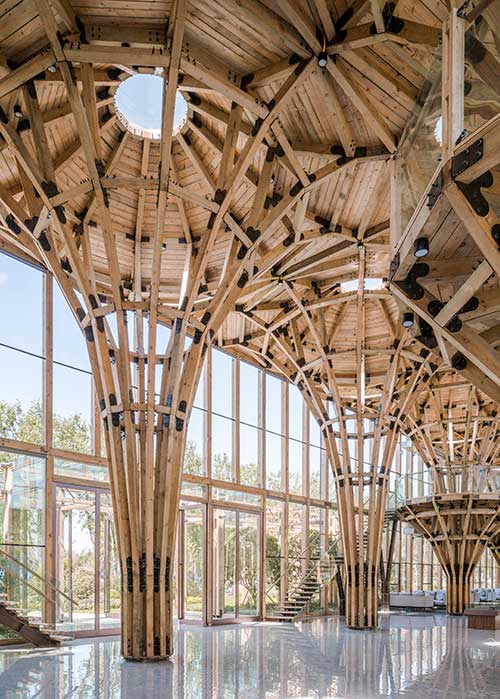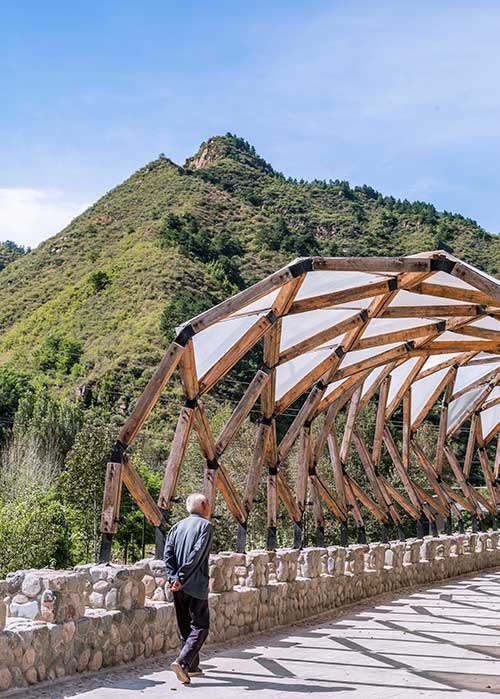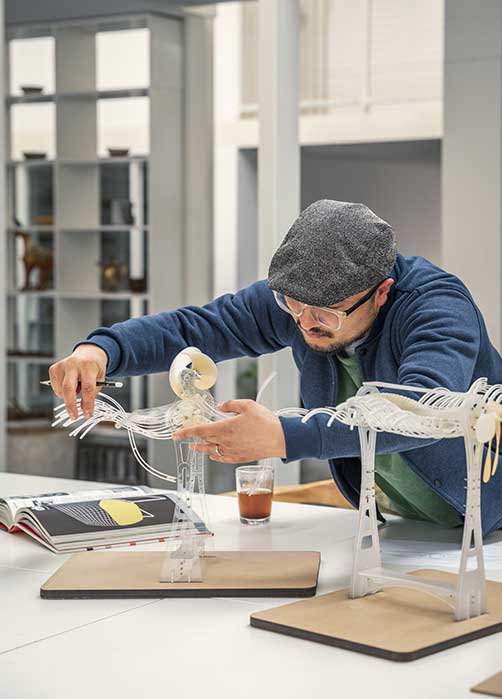“We have many great, international-standard architects in China, but talking rights still go to Western architects.” It’s a bold statement, and one made by a particularly unassuming figure. Dressed casually in a worn-in cardigan and flat cap, Beijing-based architect Luo Yujie is soft-spoken yet compelling, affable but evasive, when he’s asked about his creative process or the practicalities of running his own studio. Inquire about the state of Chinese design, however, and Luo is a dogmatic critic. “Architecture is like a religion,” he says. “It requires devotion.”
A rising star in Chinese architectural circles, Luo chafes at the quick-and-dirty construction practices that seemingly characterize the country’s inexorable, and often ruthless, urban development. Originally from Hunan, Luo first moved to Beijing to attend the Central Academy of Fine Arts (CAFA)—one of the most competitive design schools in China (it’s reported to turn away roughly 90% of applicants). Nineteen years later, Luo’s still in Beijing and now teaches construction to a new generation of architecture students at CAFA while also running his own design firm. Called LUO Studio, his concerns about environmental degradation and slapdash construction have resulted in a corresponding passion for local materials, craftsmanship, and rationalism. Some of his most noted projects include Luotuowan Pergola, a geodesic tunnel made with timber struts that have been salvaged from village renovations, and a community center in Henan—also made with wood—that can be dismantled and reused.
It’s a Sunday when we meet to talk at his studio, and Luo arrives in tow with his young son. He lives nearby, he later explains, in the family-friendly pastures of Beijing’s Shunyi District. Home to wide boulevards, international schools, and sprawling villa compounds, it’s about as close to traditional suburbia as the capital gets—and it’s over an hour’s drive from downtown Beijing. Luo’s studio itself is tucked away in 318 International Art Village, one of the many creative hubs to emerge in Beijing’s outskirts after its art scene flourished (and gentrified) during the early ’00s. Lesser known than its iconic counterpart 798 Art District, 318 has so far managed to avoid the trappings of large-scale commercialism and shambolic extensions. Instead, row upon row of industrial-style redbrick buildings line 318’s sleepy streets, eerily identical without a tourist in sight.
- Architect Luo Yujie spends much of his time in a studio tucked in the outskirts of Beijing’s many creative hubs.
- The design for the Longfu Life Experience Center, built using natural materials, emphasizes universal space so the building can easily be adapted or dismantled.
LUO Studio shares its reclaimed warehouse with two other firms, but it’s Luo’s prototypes that take up the front lawn and bring it to life, along with recycled metal offcuts now repurposed into a front gate. Inside the warehouse, a sun-lit, double-height atrium exhibits a boldly colored painting (Luo painted it himself), a vintage motorbike (it’s the sixth or seventh Luo’s restored), experimental prototypes (LUO Studio works in progress), and ancient Chinese relics (Luo found them in a village during a project). More than a studio, it’s a physical testament to his myriad of hands-on interests. “I used to worry about finding inspiration, but now I’ve realized inspiration will always just come to me naturally. Even when I’m sleeping at night, I’m working on designs in my dreams,” Luo says. We recently sat down to chat with Luo about his design approach, the state of Chinese architecture, and why Pritzker Prize–winning architect Wang Shu is overrated.
Why is environmental conservation so important to you?
I’m personally very concerned about the environment, and I believe there are a number of ways of tackling environmental and sustainability concerns. There’s a late Australian researcher with a background in permaculture [Bill Mollison] who’s been a big influence on me. He encouraged the public to recycle goods to prolong their use and get more in return, and his approach very much matches the traditional Chinese philosophy of 天人合一 [tiānrénhéyī]: harmony between man and nature.
I’m currently working on repurposing abandoned share bikes, such as Ofos and Mobikes, into portable libraries for children. All these wasted bikes. I’ve long been aware that they’re a problem and had been thinking about doing something with them anyway, but it just so happens I’ve been invited to participate in an exhibition that this project is particularly suitable for. Now we’re working on transporting books, but maybe eventually it’ll be classrooms.
I’m very interested in working with metal, but government restrictions mean I can’t carry out this sort of work in Beijing. I have a foundry out in Tangshan that lets me recycle and reuse metal waste.
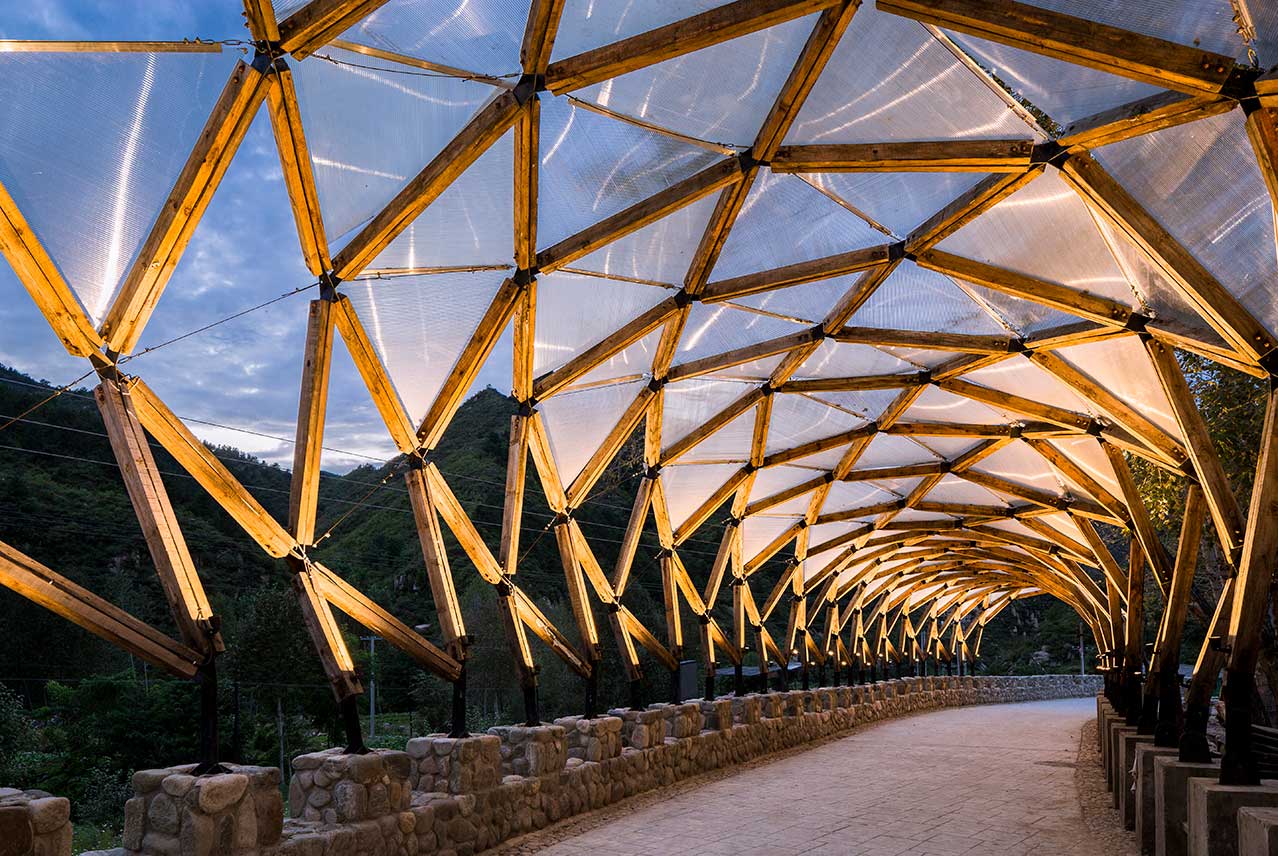
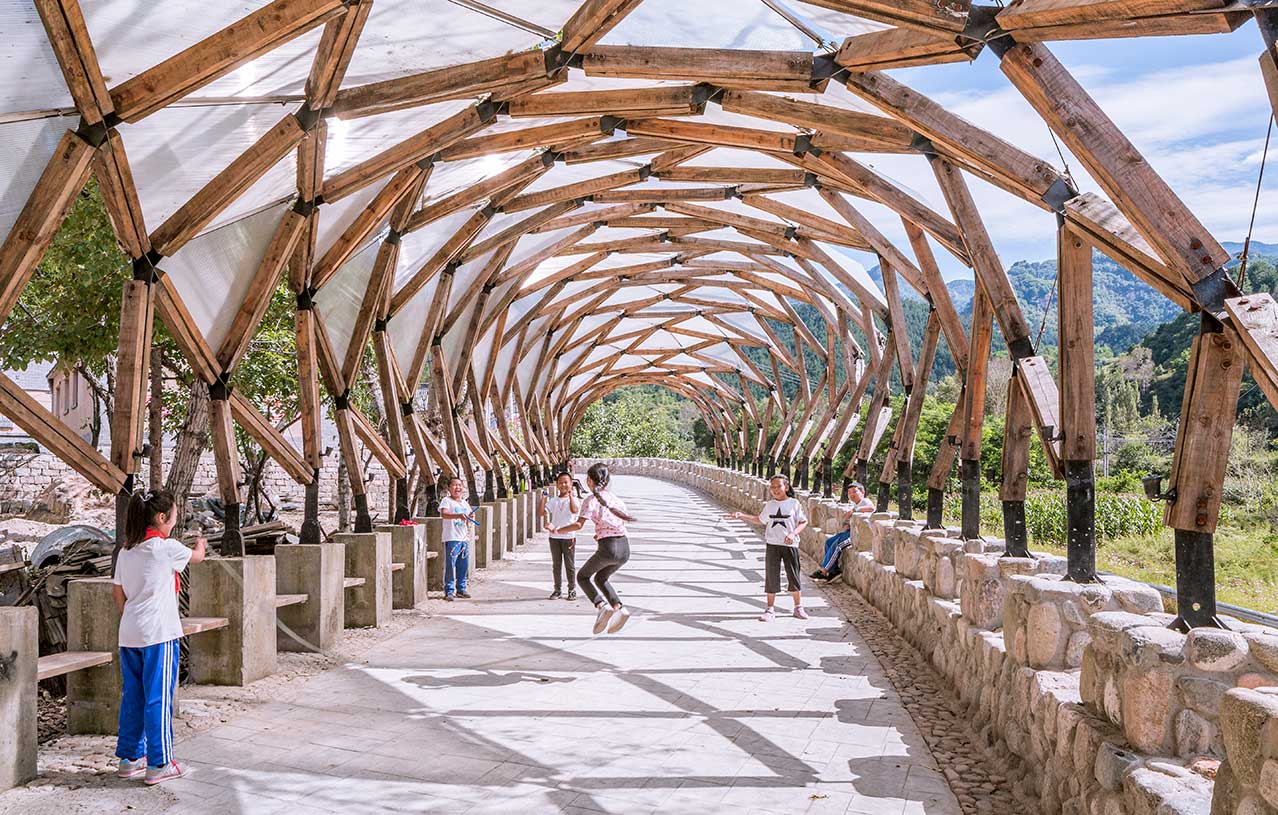
The pergola in Luotuowan Village uses wood reclaimed from local demolitions to make a structure that fits in with the surrounding mountains. ‘We didn’t cut or lengthen any wooden rod. Instead, we took into account the tolerance of length variation and ingeniously arranged the position of each wooden unit.’
Do you feel you’re restricted working as an architect in Beijing?
Personally, not really. Government restrictions don’t have a great deal of an impact on me, but with the economic downturn, some people might feel differently.
I actually worked for the government at the Beijing Institute of Architectural Design for 10 years. During that time, I was involved in a number of large-scale projects, hundreds of thousands of square meters in size. When you’re working on government projects, there’s a lot that needs to be confidential. You’re more restricted and don’t get to have much creative input. Even though I was successful there and they tried to retain me, I felt it was time to explore my own interests.
Nowadays the government takes more of an active role in environmental protection, encouraging people to head to rural areas to preserve not only the environment, but also old buildings and relics. I’m currently involved with a project in the Wudang Mountains to restore traditional buildings that have been largely destroyed due to rushed attempts to modernize.
When it comes to government-funded projects like the ones in Hebei and the Wudang Mountains, who approaches whom?
They approach me. Coincidentally, it was in that same village in Hebei that President Xi Jinping hosted a village revitalization forum back in 2003. Many soldiers who fought in the Second Sino-Japanese War have historically originated from that area, many of whom have now fallen on hard times. The government’s now intervening to restore the village in honor of their service. It’s seen as a sign of respect.
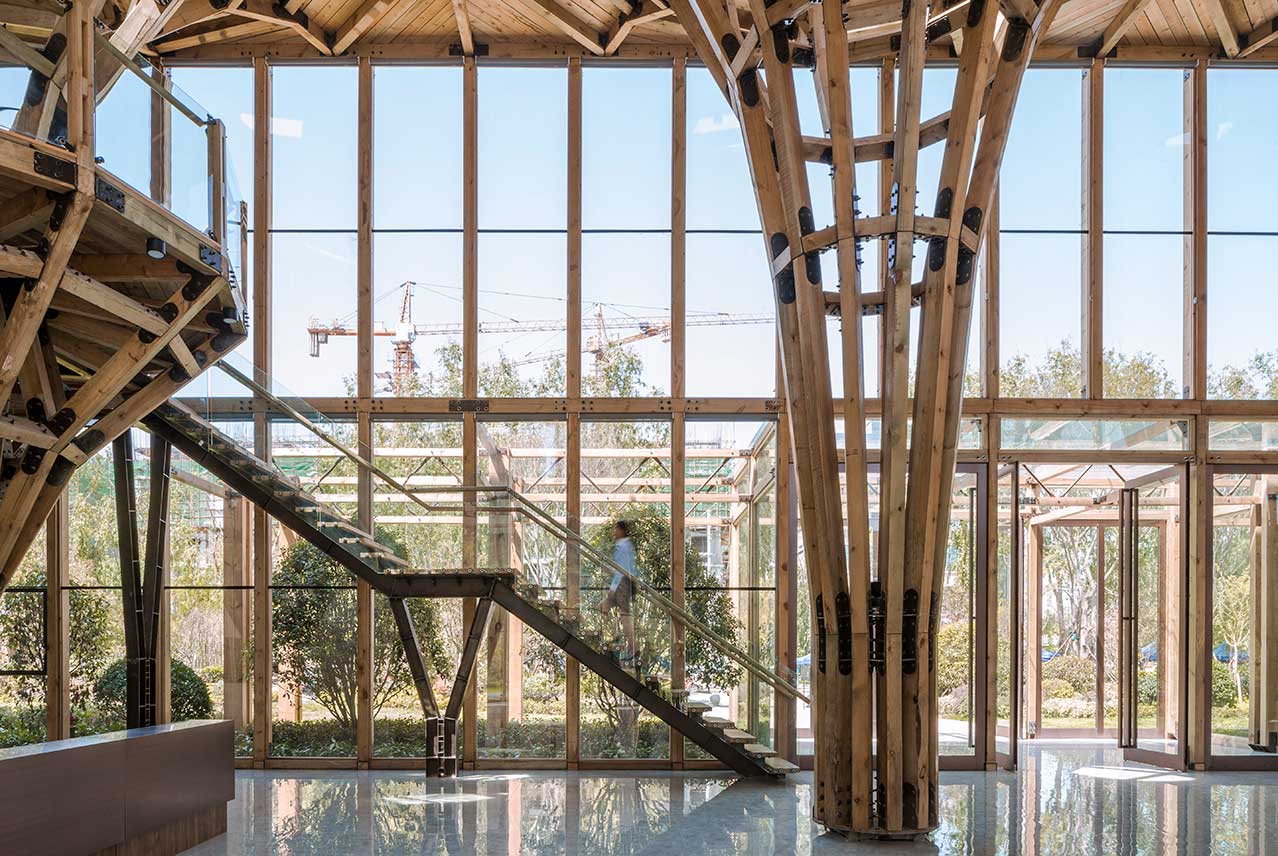
A ground-level interior shot of Longfu Life Experience Center shows off its emphasis on natural light.
Are you seeing a growing trend of environmental sustainability in China?
Yes. At the beginning, only a passionate few were involved; now it’s a nationwide trend because people are finally starting to recognize the steady deterioration of the country’s ecological systems. Urban development in China is increasing at such a rapid rate, bringing with it a multitude of new issues and problems, that the government has to get involved with not only planning and policy-making, but also by supplying capital and resources.
Most of your projects are in rural areas outside of Beijing and require you to be onsite. How do you go about running your studio?
Our team travels together to each site, which is rare in this line of work. Most studios usually draw up plans then pass them off to a construction firm to carry out, but we work as a team with the builders on the ground. We realize many builders will have never been to these rural areas before, so having designers onsite allows us to brief everyone so they’re familiar with the project as well as immediately troubleshoot any problems that may occur during construction.
Occasionally we’ll leave a couple of people behind at the studio to run workshops. We host classes for kids that not only teach them architecture and construction basics but also how to make their own models.
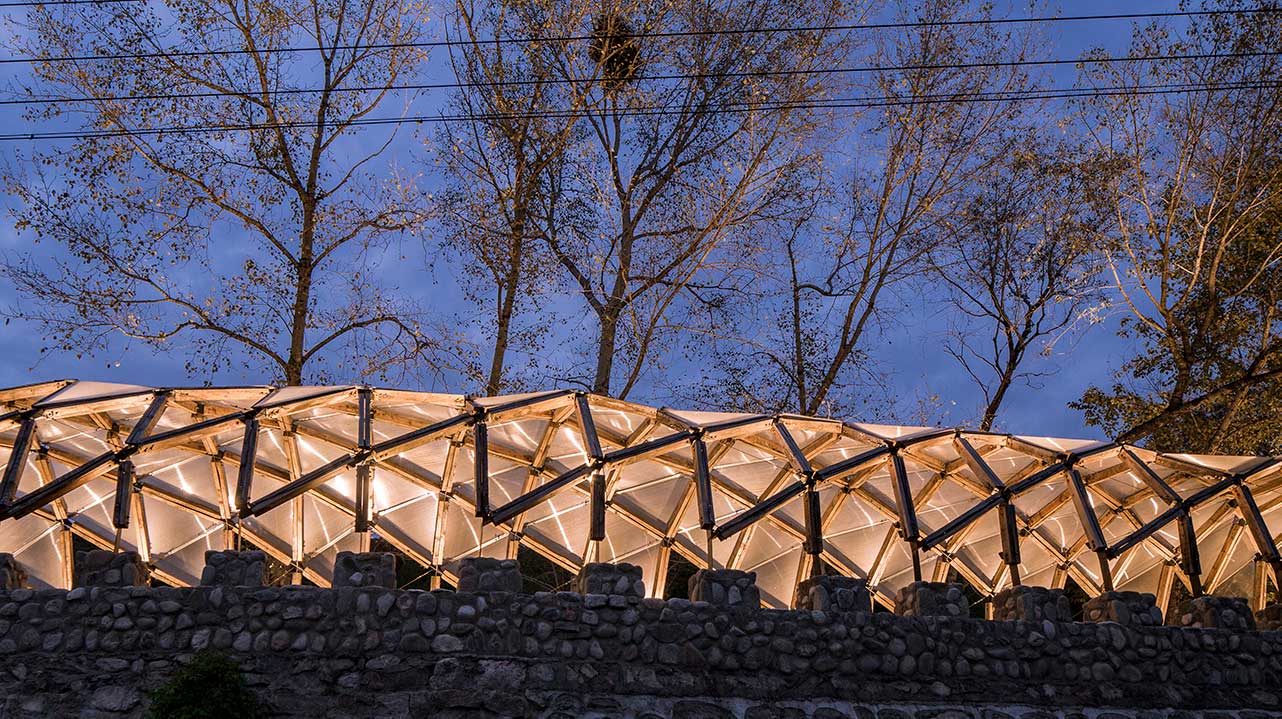
A nighttime close-up of the Luotuowan Village pergola.
Education seems to be important to you, particularly as you also teach architecture at CAFA. What are some of the most important ideas you try to pass on to the next generation of architects?
I try to communicate to students the importance of understanding and working with the environment, despite CAFA not currently having a course that teaches sustainable design. That being said, I don’t believe teachers should force their students to care about the environment or purely focus on eco-friendly design. Students need to come to this conclusion themselves, particularly as approaches can be subjective. In my class, it’s more that I’m trying to instill in them that basic materials, even if they’ve been reclaimed or recycled, can still result in something magnificent, provided you execute it well. A good house is never wasted, only materials.
“Architecture is like a religion. It requires devotion.”
What are your thoughts on Beijing architecture now?
This is obviously very subjective, but I believe the average Chinese person’s thinking isn’t very open-minded. [Designers] tend to stick to trends or tradition, follow what others are doing, or are reluctant to break the mold. Chinese architecture lacks execution.
Given the chance, what would you change?
Beautiful design isn’t just about looking good. It has to be practical, instead of just simply being a symbol or marker like Suzhou Tower Bridge [a replica of London’s Tower Bridge]. It’s important to study what real traditions are, rather than leaving everything on the surface.
I want to change people’s attitudes about the environment and communicate the importance of minimal intervention and impact, of leaving no trace. I hope people appreciate my dedication and devotion to the environment. It doesn’t matter what you study, as long as you’re committed.
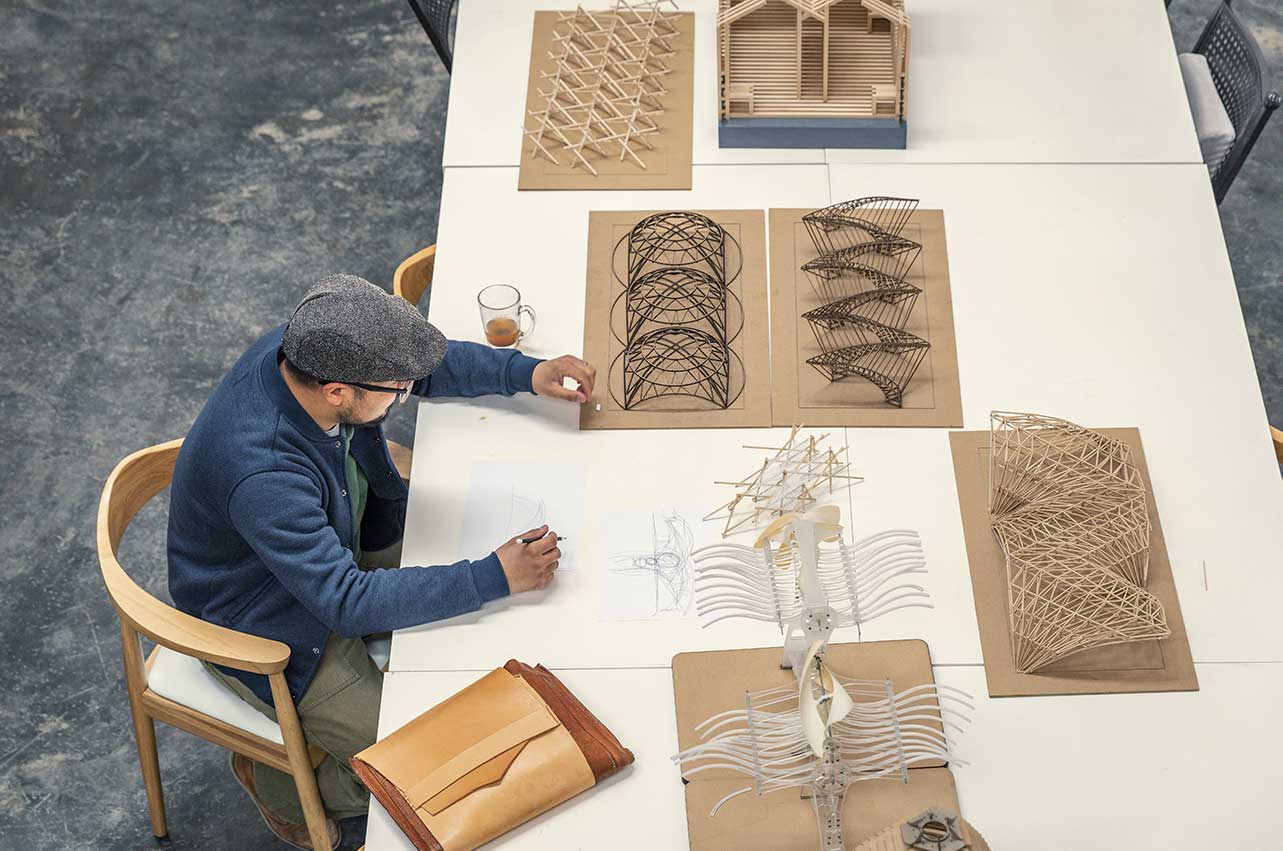
Luo Yujie is a teacher at the prestigious Central Academy of Fine Arts (CAFA) that was established in 1918. The school accepts only 10% of its applicants.
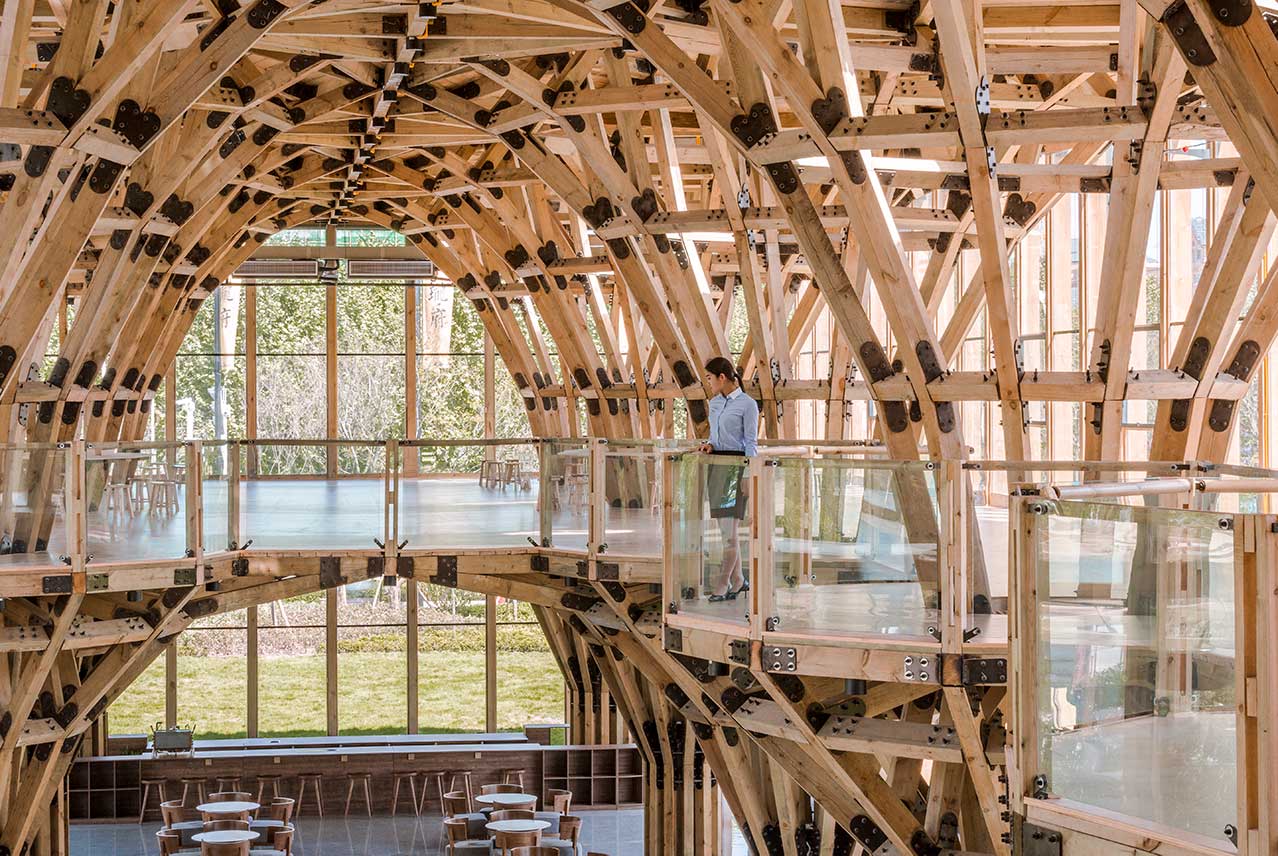
An interior view of Longfu Life Experience Center’s scenic atrium.
Is it hard to convince Chinese people to get onboard with your environmental concerns?
Not as difficult as you might think. Our current project in the Yellow Mountains is actually being funded via public donations. The reality is many villages are experiencing similar problems. In this case, multiple people stepped in to help, and the public ended up taking the initiative, without even asking, to raise more than two million in capital. It’s really more of a partnership with the local community now, than a donation.
How do you balance the business and creative sides of your studio?
I’m not very good at business. Fortunately, I get a lot of jobs via recommendations from people in similar circles. I have a group of good friends and contacts who frequently pass opportunities my way. When I’m running low on funding, I’ll work on a few commissioned projects, then return to my bikes.
I’m also a very conservative spender. If I have a 100 yuan, I’ll only want to spend 60 and save the rest for a rainy day. I’m cautious because my team’s income is dependent on me. Our job, by nature, is risky. I have high expectations in regards to their skillsets and abilities, and in return, I guarantee their job security and wage. By being careful, the whole team steadily improves together, which helps attract more lucrative and interesting projects.
Life’s unpredictable. I once helped out a friend for free with a temporary installation at Taikoo Li Sanlitun [a fashionable retail complex in Beijing’s Chaoyang district]. Someone saw it and I ended up getting invited to Helsinki for an exhibition, which in turn led me to my current project.
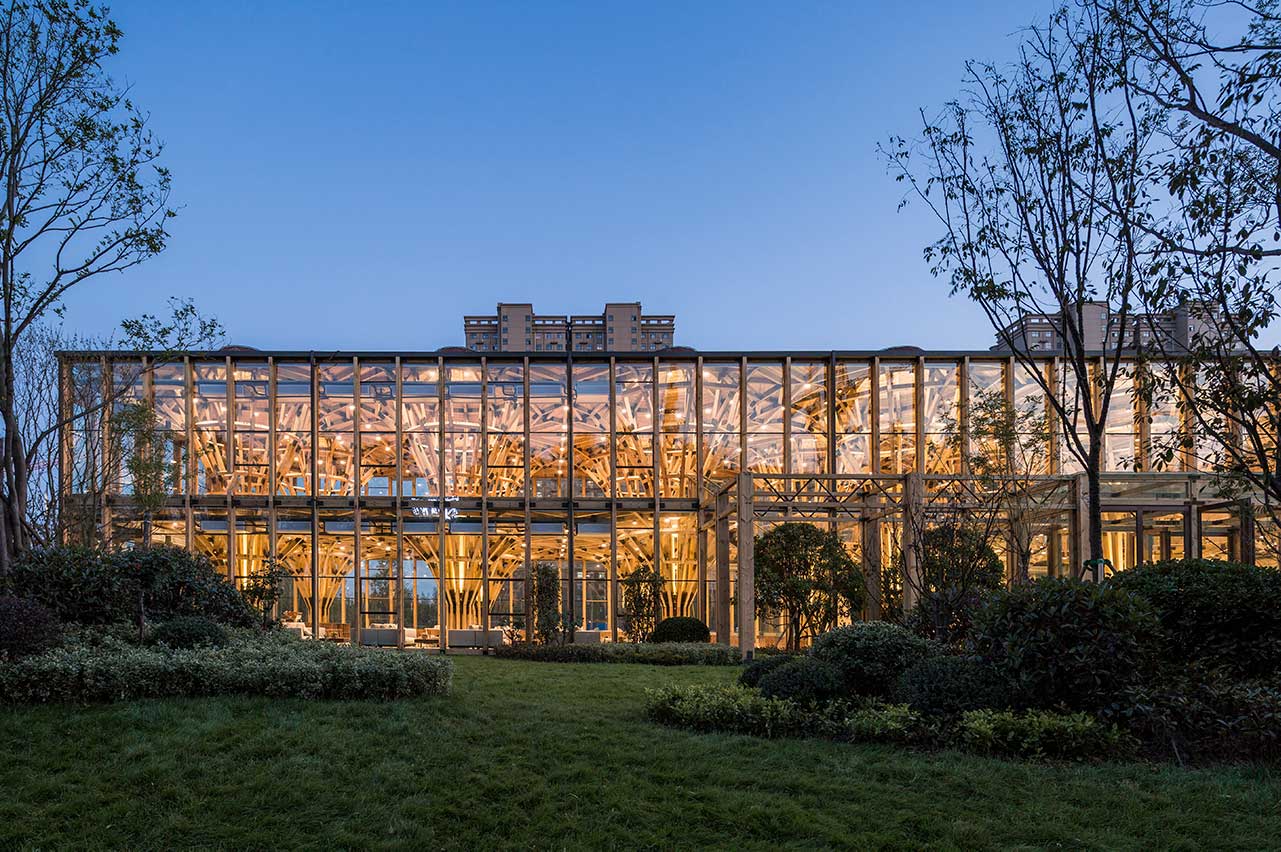
A garden view of the Longfu Life Experience Center. The sustainable design is characteristic of Luo Yujie’s environmentalist principles.
Do you often collaborate with international firms?
I worked on the renovation of a local residential compound in Tanzania, but other than that, not much. I would like to, though. In the future, I’d like to work in underdeveloped countries to build temporary shelters.
What about with Beijing firms?
Sometimes, when we need engineers or specialists with particular technical skills.
Are there any particular Chinese architects that Luo Yujie admires?
Zhang Lei [AZL Architects], Liu Jiakun [Jiakun Architects], and Zhang Ke [ZAO/standardarchitecture].
Unlike others, I don’t like Wang Shu. I’m not saying he’s not a good architect, but I share more of a similar design approach and ethos with those other three. Wang Shu focuses too much on communicating humanism in architecture. The strange window placement, the excessive number of ramps—they look interesting and aim to elicit an emotional response, but when you actually inhabit each space, they don’t feel comfortable, nor are they practical. Architecture is an old profession, and designs should demonstrate craftsmanship and precision. I believe when we build things well we can still achieve a beautiful result—without having to sacrifice expression.
Those architects—Liu Jiakun, Zhang Ke, Zhang Lei—are great architects. They focus on materials and craftsmanship to create great buildings that still retain a distinctly Asian style, without pandering. It’s like that movie by Ang Lee [Crouching Tiger, Hidden Dragon]. It appears to depict all the aspects of a traditional Chinese movie, but in fact, it’s really just trying to appeal to Western audiences. In the case of Wang Shu, his style fits with the Western ideal of Chinese architecture so they prefer to pick him as a symbol.
We have many great, international-standard architects in China, but talking rights still go to Western architects.
Are good architects just not being recognized in China?
Chinese architects aren’t generally known to global audiences. It’s more often that you’ll just be known within your own field. Zhang Ke won a prestigious award not too long ago, but a lot of people still aren’t familiar with his work. China’s architectural field is getting better and better though, so I’m optimistic.
- The Luotuowan Village Pergola, made of reclaimed wood, sits at the foot of the Taihang Mountains.
- Luo Yujie adjusts an architectural model. His studio hosts classes for kids on how to design and construct similar models.
Occasionally we’ll leave a couple of people behind at the studio to run workshops. We host classes for kids that not only teach them architecture and construction basics but also how to make their own models.
Are there any foreign architects you admire?
Peter Zumthor. He gets to the core of architecture. By that, I mean light, materials, creativity, touch, and space. A lot of people building houses don’t stick to these fundamentals. [Zumthor]’s father was a cabinet-maker, and you can see that precision, workmanship, and attention to detail in his work. Some people regard architecture as a purely creative endeavor, forgetting buildings still need to be functional and livable.
What are your goals for the future?
Personally, one of my aspirations is to go to Switzerland and study at ETH Zurich (a science, technology, engineering, and mathematics university). I’m actually planning a visit there later this year to do a bit of research and take a look around. Several designers I admire and share a similar approach to, such as Zhang Lei, have also studied there. Professionally, it’s hard to say; I take things as they come. I believe if you set off on the right foot, you’ll lay a good foundation for the future. It’s important to do things well, one step at a time.
Photos by Jin Weiqi.
This article originally appeared in the Spring/Summer 2019 issue of Sixtysix with the headline “Luo Yujie on Sustainability and the State of Chinese Design.” Subscribe today.
